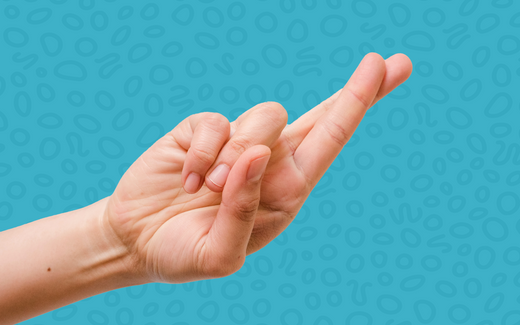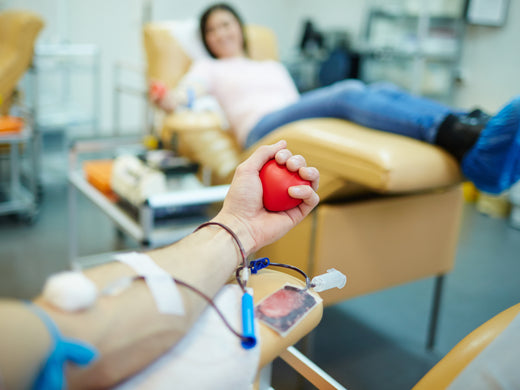Don’t let the ‘unlucky’ number fool you – this list will help put you on the road to success when it comes to looking after your blood health.
Hemoglobin isn’t talked about much, but it should be. If your hemoglobin count is too low, you leave yourself at risk for anemia, kidney disease, liver disease, hypothyroidism, and cancers that affect bone marrow (like leukemia).
Sometimes our hemoglobin counts are low due to a genetic type of anemia, but most iron-deficient people can increase their levels by making a few simple lifestyle changes. Luckily for you, we’ve rounded up the 13 best ways to do exactly that.
1. Eat More Iron
This is one of the easiest, and best things you can do to prevent anemia and improve your hemoglobin levels. Without enough iron in your system, your body can’t make more red blood cells, which means less hemoglobin. Less hemoglobin means less oxygen is being delivered to your body, which can result in fatigue, irregular heartbeats, and pale skin.
Here are some of our favorite iron-rich foods:
- Beef
- Seafood
- Organ meat
- Oysters
- Mussels
- Beans
- Tofu
- Iron-fortified cereals
2. Go Outside
Unlike iron and other vitamins and minerals, most of our Vitamin D doesn’t come from food but the sun. We’re sure you’ve heard a beach tanner sarcastically say “Got to get my Vitamin D.” Well, as it turns out our bodies need Vitamin D to help with iron absorption (though nobody’s sure why).
So do your body a favor and catch some rays (just not too much).
3. Eat More Vitamin C
There’s two types of iron: heme, which comes from animal products like meat and eggs, and non-heme, which is found in vegetables. Non-heme is typically less bioavailable than heme, meaning our body can’t use it quite as well, unless we eat it with some Vitamin C.
Vitamin C essentially transforms non-heme iron in a way that allows the body to easily use the nutrient to create more healthy red blood cells.
So stock up on citrus, dark leafy vegetables, and your favorite fruits.
4. Increase Folic Acid Intake
Iron is one of the most important nutrients for red blood cell production, but it’s not the only one. Folic acid, a type of B Vitamin, is also responsible for keeping your cell count up. Most Americans get enough of this nutrient, but if you find you’re still experiencing anemia symptoms after increasing your iron intake you may be deficient.
Foods high in folic acid include beans, peanuts, sunflower seeds, fresh fruits, juices, whole grains, and, if you’re brave enough, liver.
5. Drink Nettle Tea
What the heck is nettle tea? Well, it’s a tea made from the leaves of the nettle plant, and unlike black and green tea that can actually decrease your iron levels (more on that in a second), you’ll get iron and Vitamin C in this drink.
That’s the good news. The bad news is the taste is similar to that of vegetable broth, so drink at your own risk.
6. Hold the coffee and tea…for now
We all love a cup of joe, but it’s highly advised to not drink coffee or tea around meal time – especially if you’re worried about keeping your iron levels up. The tannins in coffee and tea bind to iron molecules in your digestive system, and make it harder for the body to absorb it.
Wait at least 30 minutes after eating before enjoying your beverage.
7. Move Around
Science has shown that increased physical activity can lead to increased red blood cell production, which results in improved hemoglobin levels. That doesn’t mean you need to go through a one-hour CrossFit session, but maybe take the dog on an extra walk a few days a week.
Just don’t overdo it, because…
8. Don’t Overtrain
…it’s also been proven that too much physical activity can have a detrimental effect on your hemoglobin levels. If you overexert yourself, your body has an increased demand of red blood cells which will deplete them, and your hemoglobin quickly.
Listen to your body. When it needs a rest day, give it a break. There’s nothing wrong with a Netflix binge.
9. Switch to Brown Rice
One cup of brown rice has nearly 1 mg of iron, compared to 0.3 mg in the same amount of white rice. Now, 1 mg might not be a lot but every little bit helps.
10. Stop Smoking
Smoking has a number of health risks, and anemia is one of them. Smoking weakens your immune system, decreases the potency of vitamins and minerals needed for hemoglobin production, and can also make it harder for hemoglobin to do its job of delivering oxygen to your body.
11. Eat Dark Chocolate
We don’t have to convince you to do this, but in case you wanted another reason to dive into a chocolate bar you’ll be happy to know one ounce of dark chocolate has 3.3 mg of iron (about 18% of your daily recommended intake.
12. Look After Your Mental Health
We’ve written about this before, but poor mental health can cause poor physical health by impacting our digestion and increasing our heart rate, both of which can cause our red blood cell and hemoglobin levels to drop.
13. Track Your Iron Score with Ruby

It’s simple: If you want peace of mind, Ruby allows you to measure your iron scores by taking a fingernail selfie, and you’ll have results in seconds.
Click here to download Ruby from the iOS and Android app stores.





Leave a comment
This site is protected by hCaptcha and the hCaptcha Privacy Policy and Terms of Service apply.